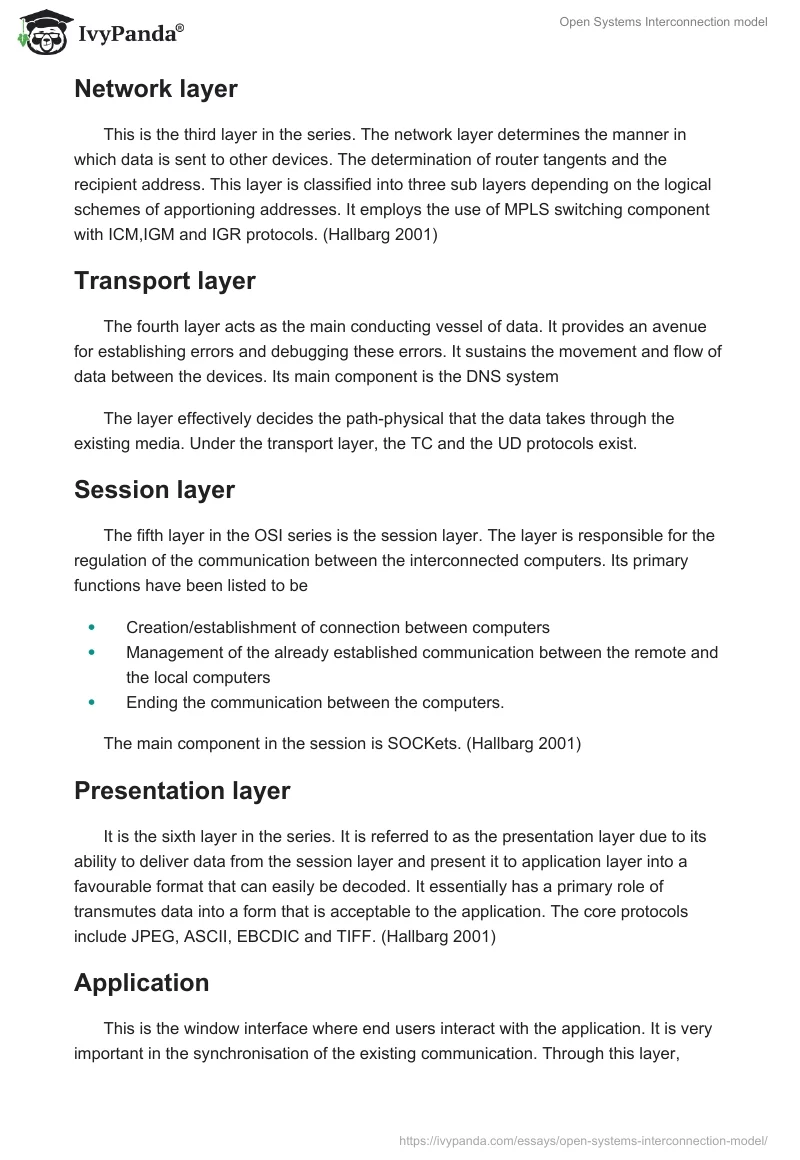Introduction
The international organisation for standardization – ISO, in its bid to streamline and regulate the networking sector, introduced the OSI labelling techniques. The OSI layer labelling operates as a guide post to provide a universally accepted framework for implementing networking protocols. (Hallbarg 2001)
OSI layers
The OSI are divided into seven layers labelled in integers from 1 to 7. The layers are arranged in a stratum whereby layer 7 is in the top and the bottom layer is 1.
Physical layer
This layer determines the electrical and physical stipulation for the devices. This layer plays a significant role of specifying the connection between the device and the medium of transmission.
The physical layer is focused in the reception of signals through the physical medium. It defines the transmission technique and the medium through which these techniques are conducted.
Data link layer
This layer is relegated into two sub groups, in this layer; the data transmitted is essentially assigned specific and appropriate physical property. The transmission is done through wireless routers e.g. the 802.11 Wi-Fi these physical properties would include such features like the medium of transfer. This layer is also responsible in the delimitation of the network type and the packet sequencing procedure of the network. It uses DCA and LAC protocol
Network layer
This is the third layer in the series. The network layer determines the manner in which data is sent to other devices. The determination of router tangents and the recipient address. This layer is classified into three sub layers depending on the logical schemes of apportioning addresses. It employs the use of MPLS switching component with ICM,IGM and IGR protocols. (Hallbarg 2001)
Transport layer
The fourth layer acts as the main conducting vessel of data. It provides an avenue for establishing errors and debugging these errors. It sustains the movement and flow of data between the devices. Its main component is the DNS system
The layer effectively decides the path-physical that the data takes through the existing media. Under the transport layer, the TC and the UD protocols exist.
Session layer
The fifth layer in the OSI series is the session layer. The layer is responsible for the regulation of the communication between the interconnected computers. Its primary functions have been listed to be
- Creation/establishment of connection between computers
- Management of the already established communication between the remote and the local computers
- Ending the communication between the computers.
The main component in the session is SOCKets. (Hallbarg 2001)
Presentation layer
It is the sixth layer in the series. It is referred to as the presentation layer due to its ability to deliver data from the session layer and present it to application layer into a favourable format that can easily be decoded. It essentially has a primary role of transmutes data into a form that is acceptable to the application. The core protocols include JPEG, ASCII, EBCDIC and TIFF. (Hallbarg 2001)
Application
This is the window interface where end users interact with the application. It is very important in the synchronisation of the existing communication. Through this layer, various processes like messaging, remote access to computer files, network management and resource sharing.It uses FTAM , HTT, CMI, FT and SMT protocols. (Hallbarg 2001)
Reference
Hallberg, B. A. (2001). Networking a beginner’s guide (2nd ed.). New York: Osborne/McGraw-Hill. Print


